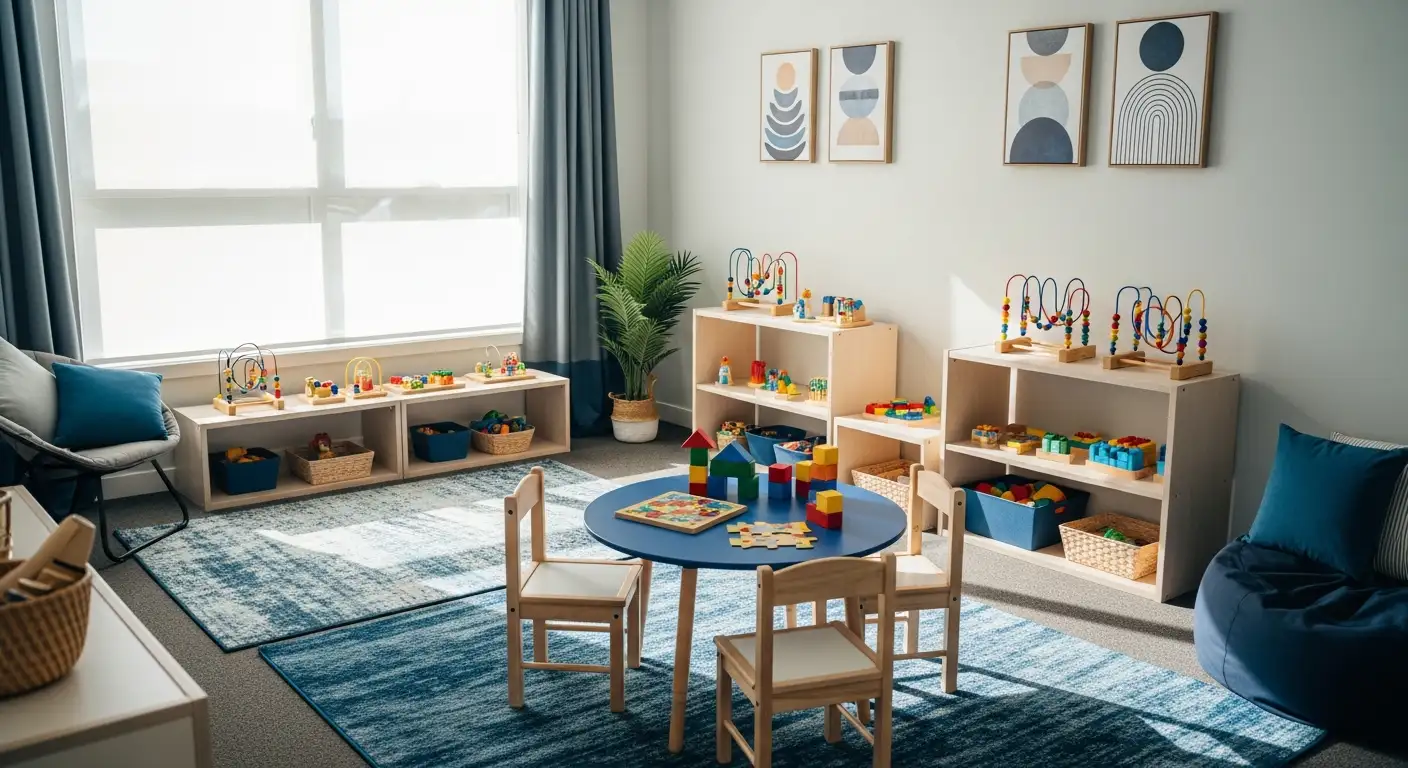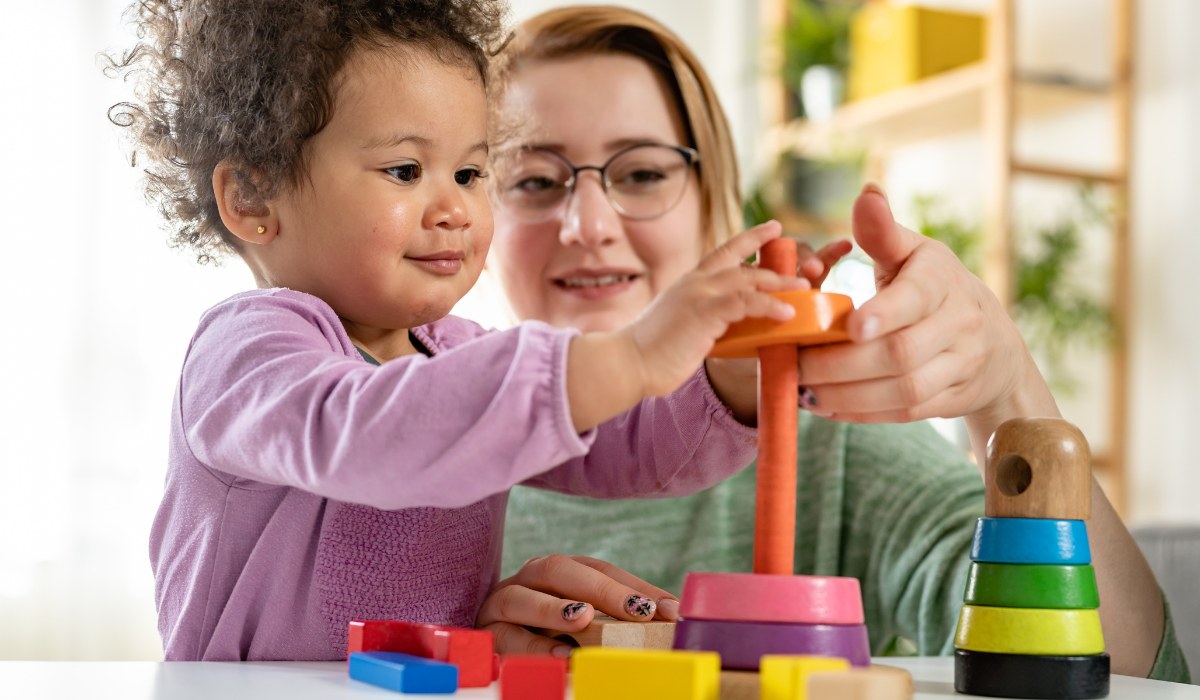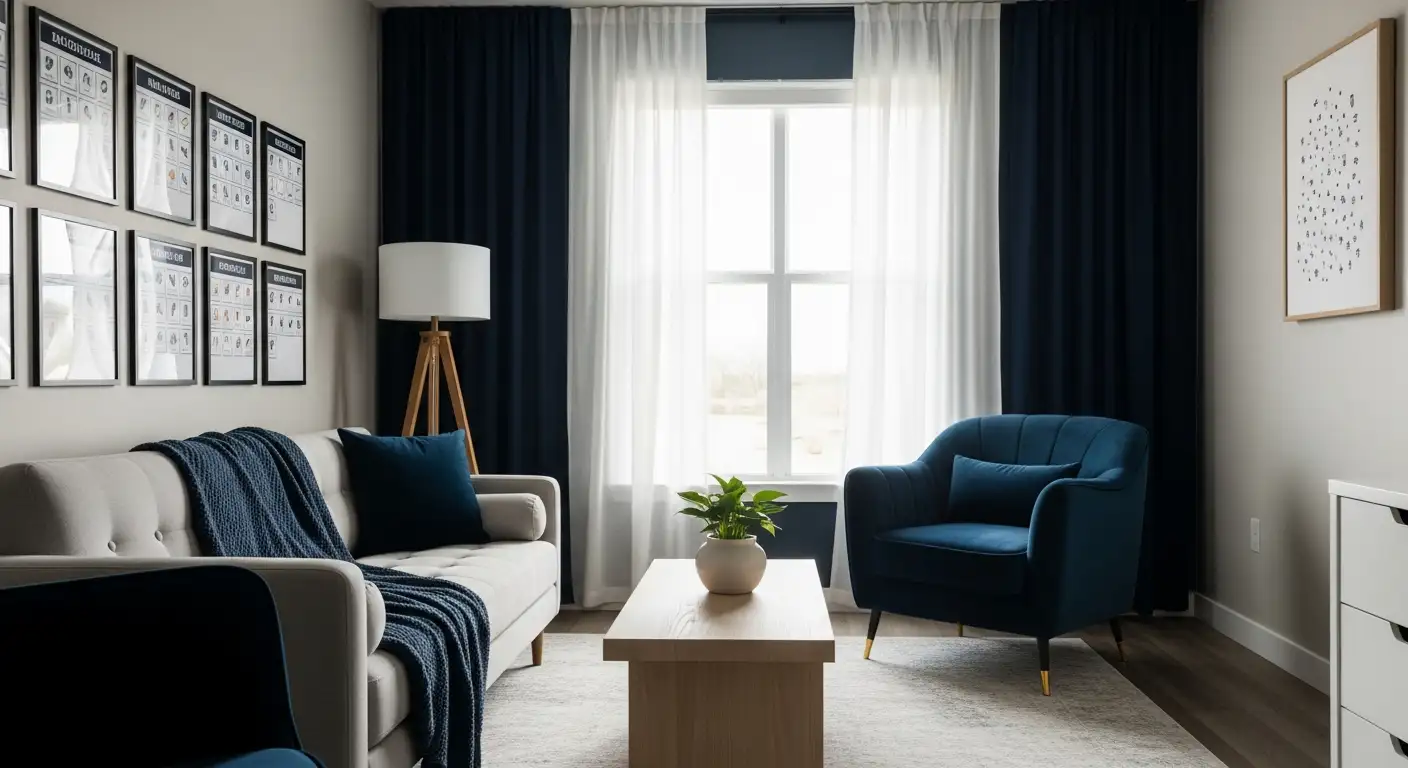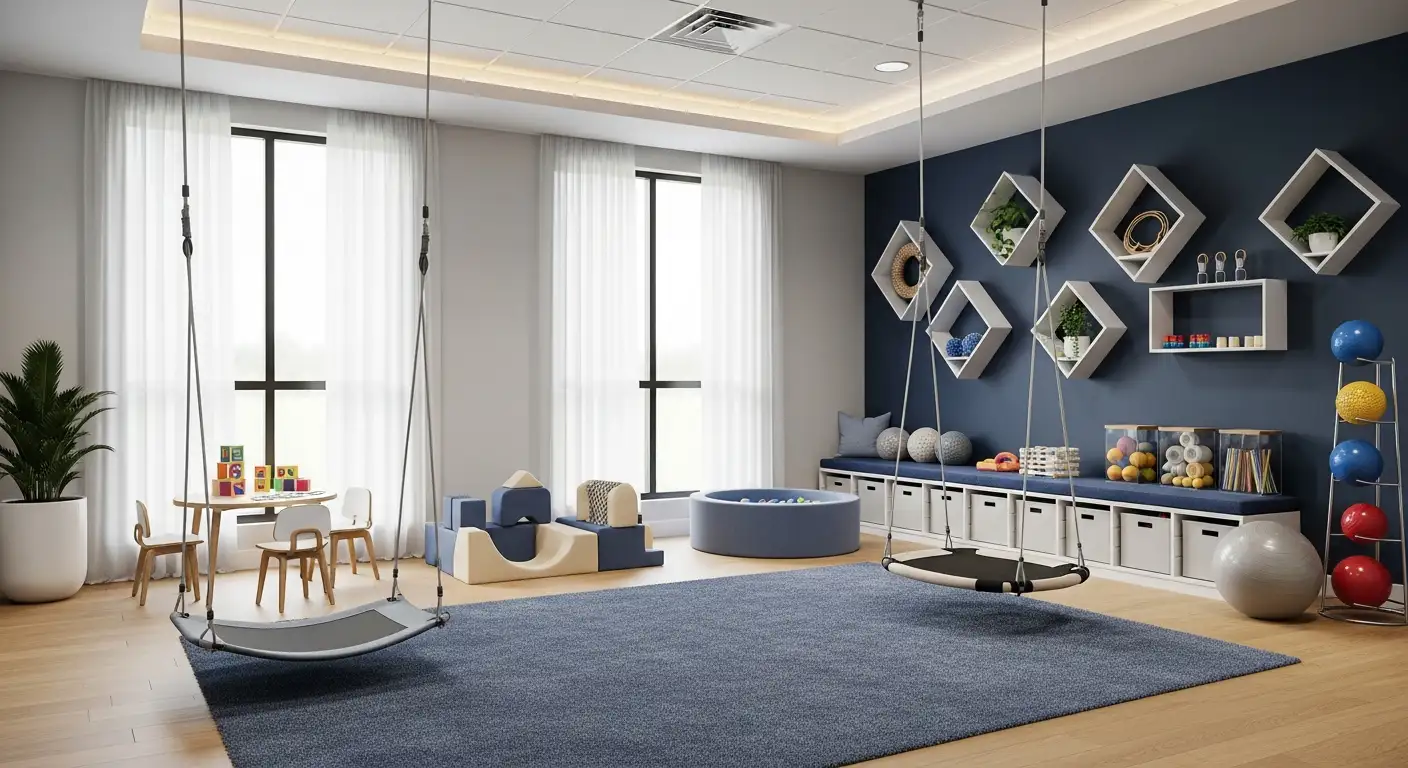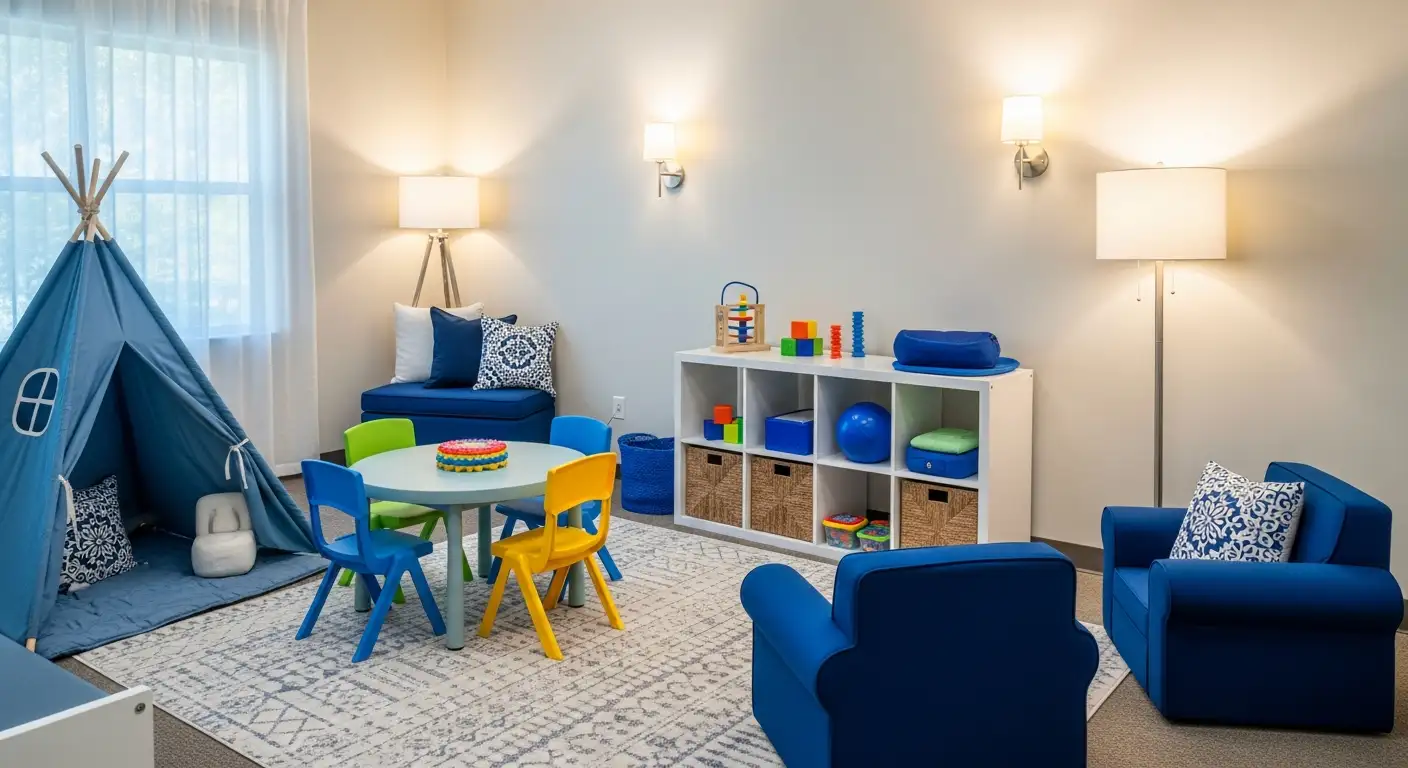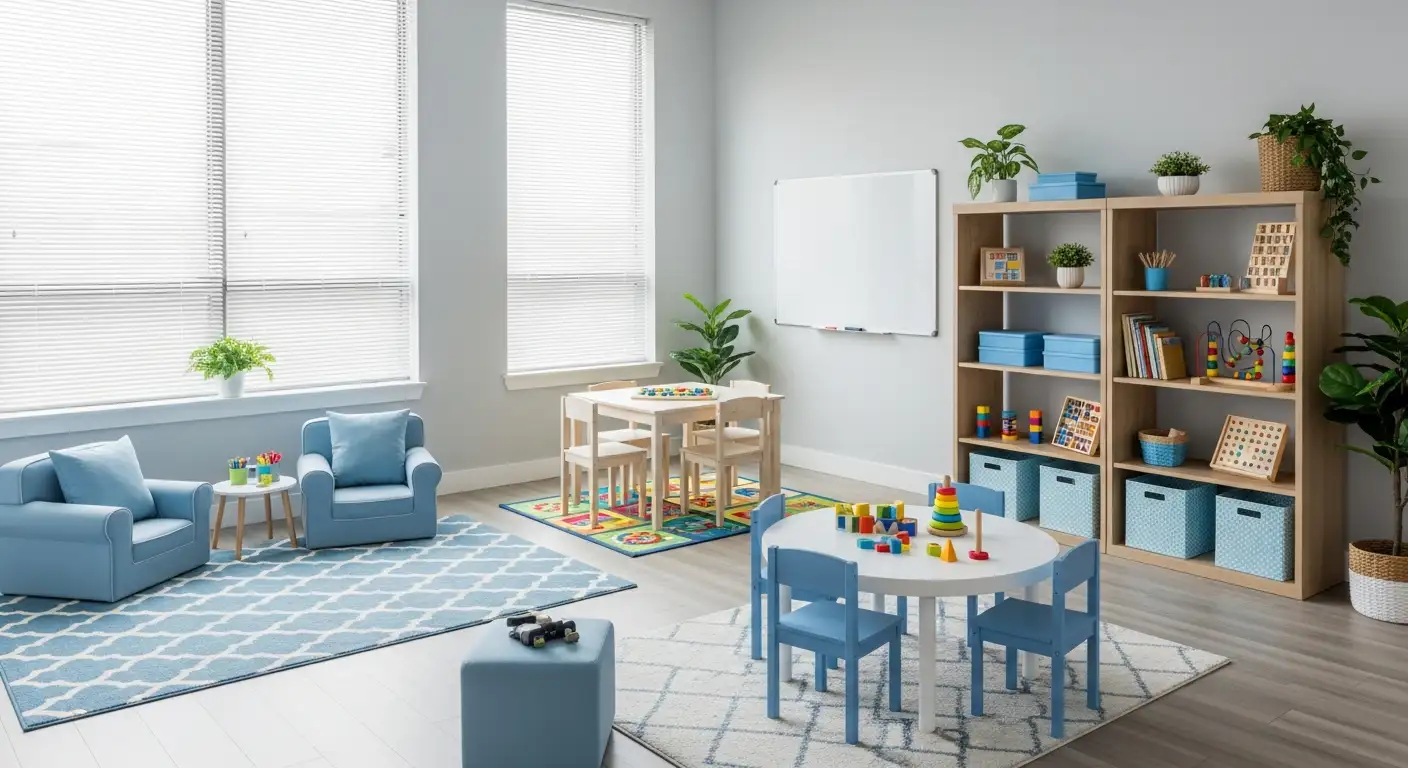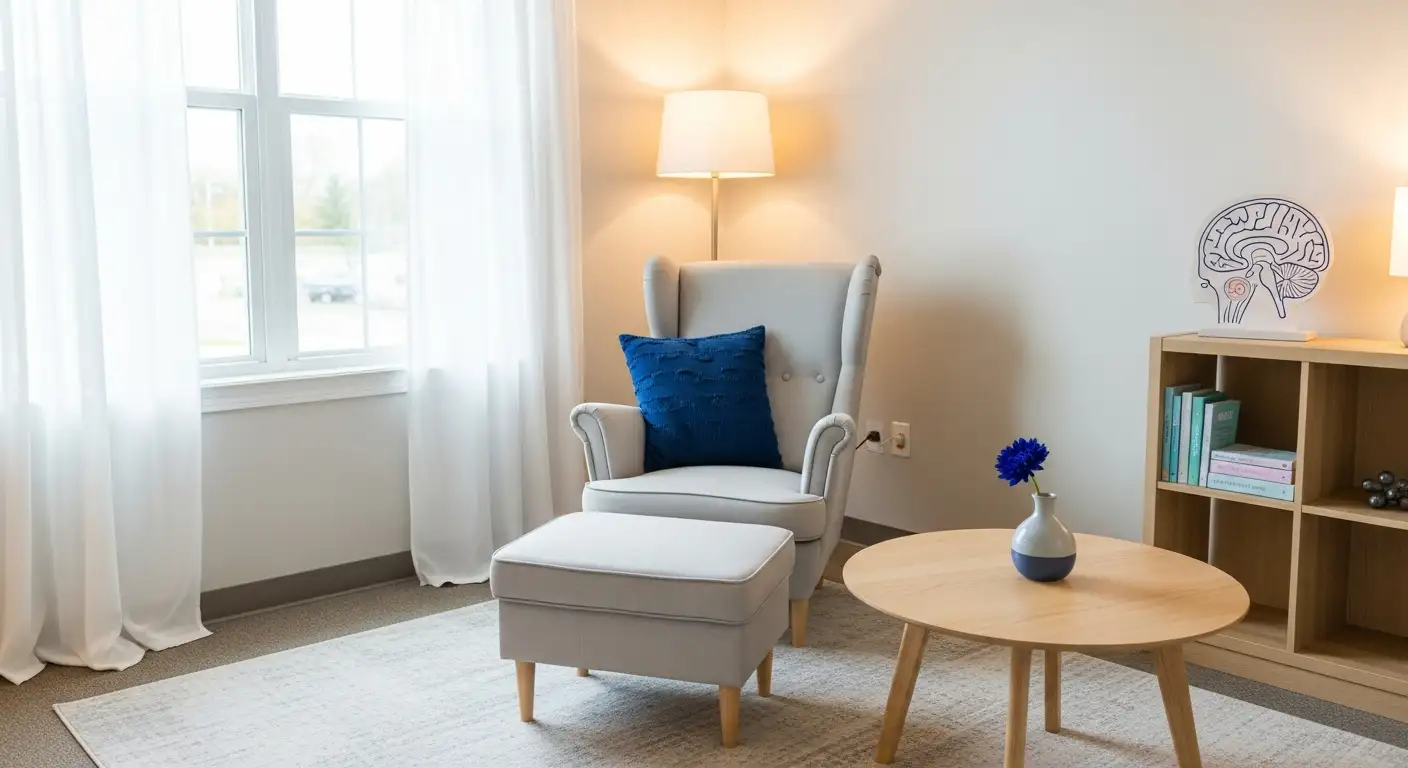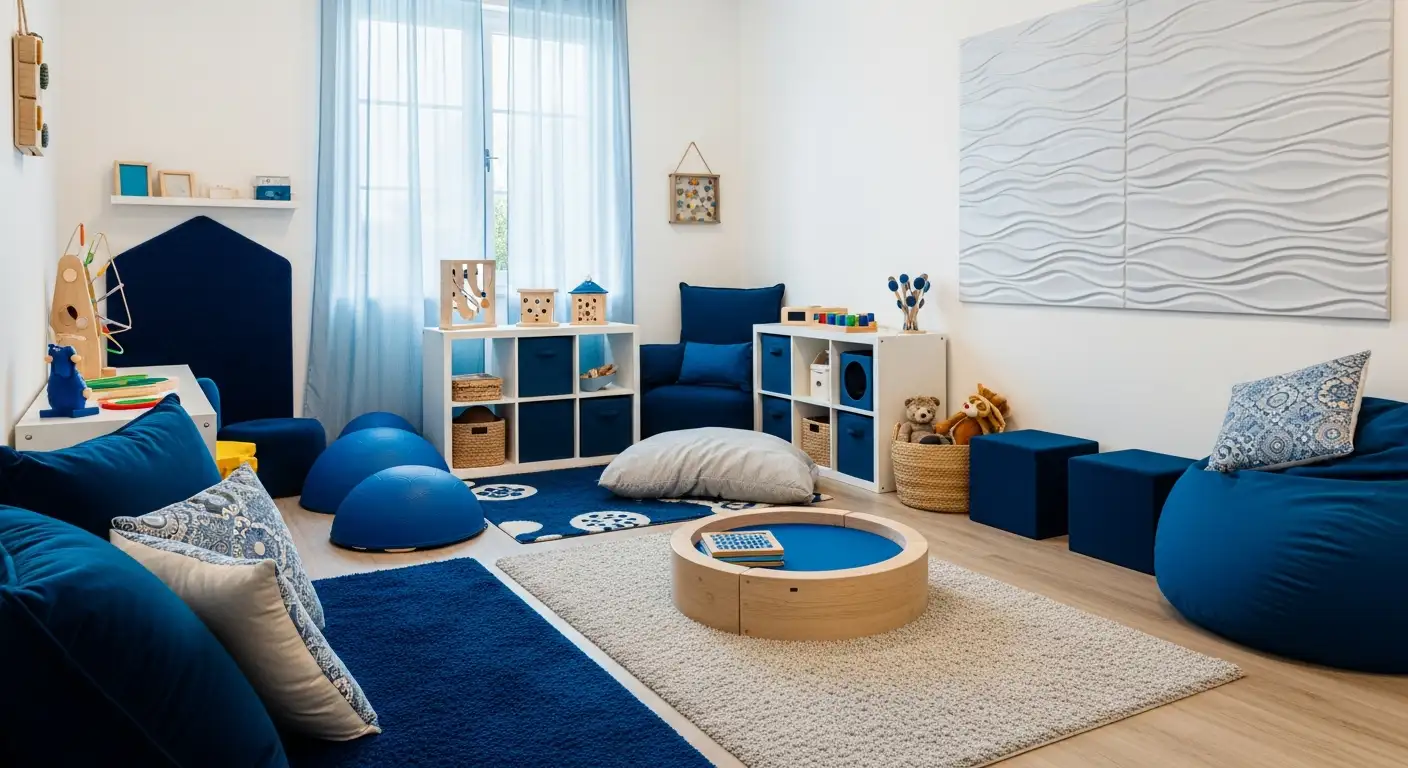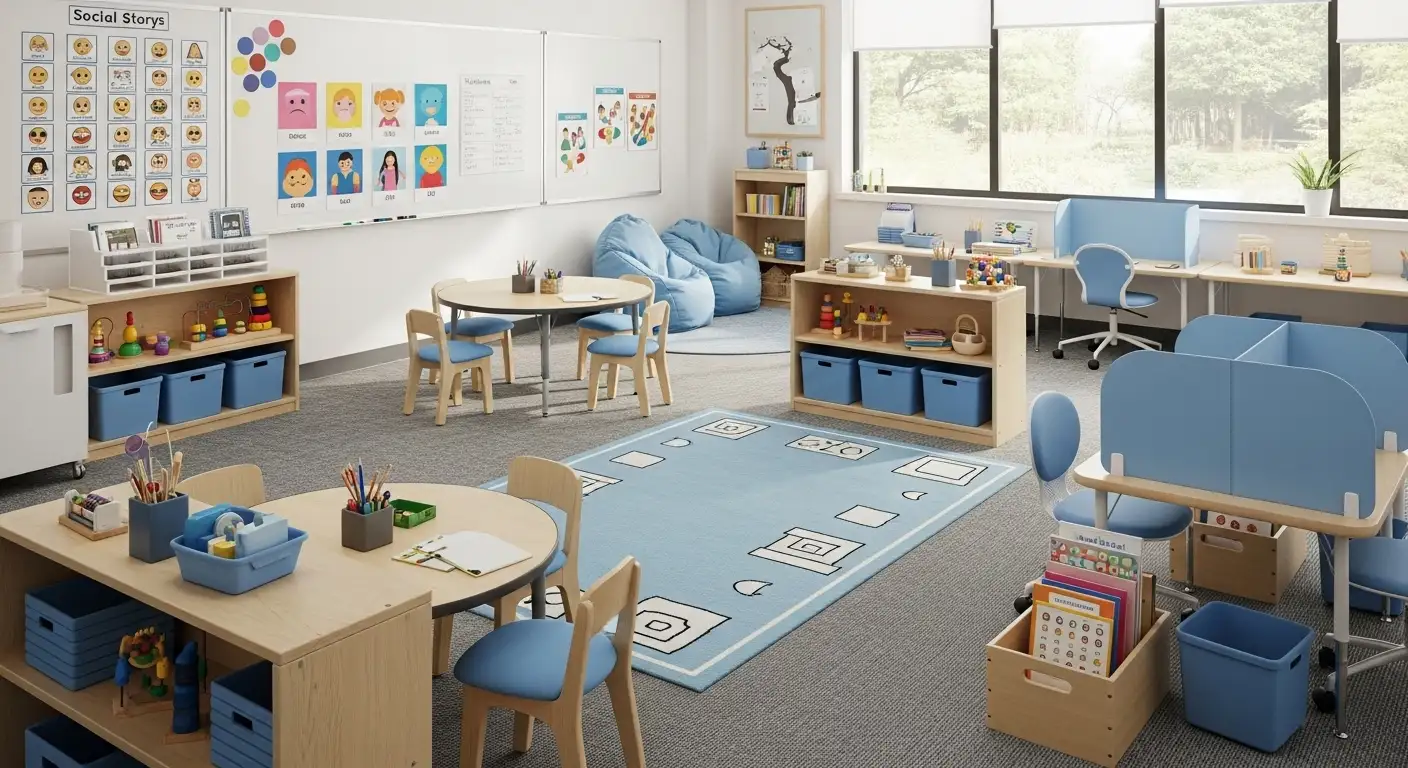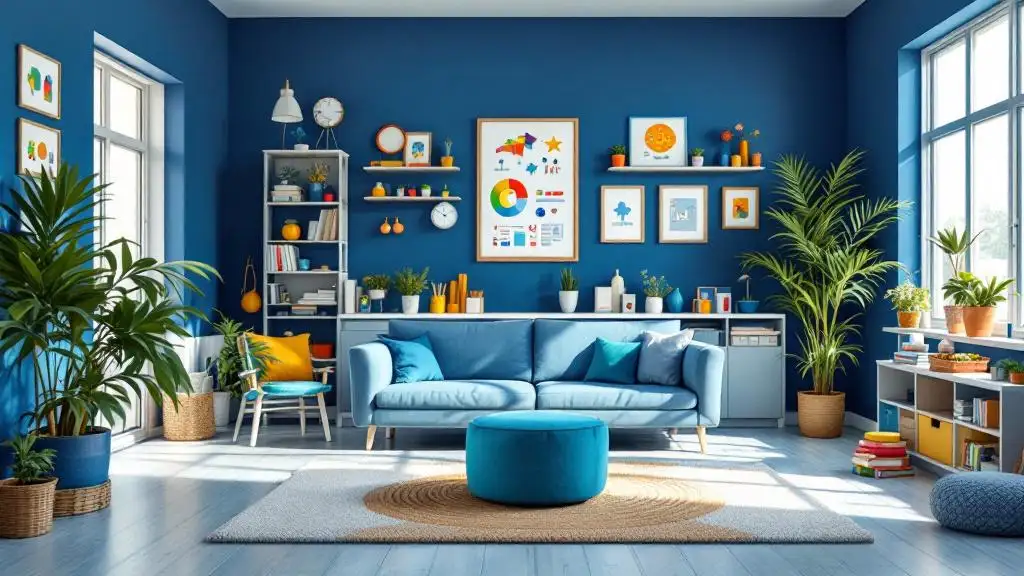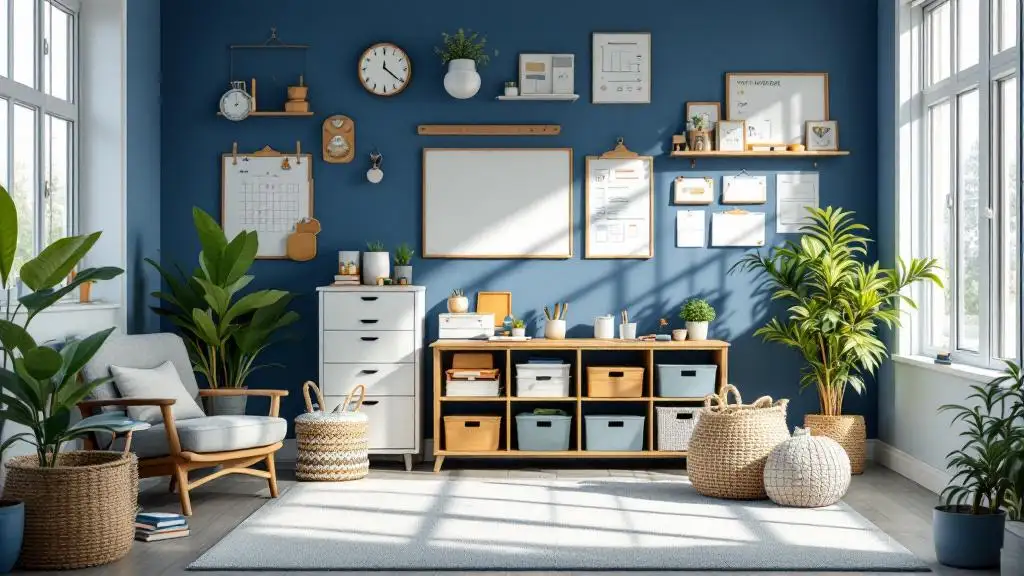Supporting Autistic Adults in Managing Sensory Overload
Effective Strategies and Therapeutic Approaches to Sensory Overload in Autism

Understanding Sensory Overload in Autistic Adults
Sensory overload is a prevalent and challenging experience for many autistic adults, manifesting as an overwhelming flood of sensory information that exceeds the nervous system's capacity to process. This article explores the nature of sensory processing differences, the impact of sensory overload on the lives of autistic adults, and evidence-based strategies — including therapeutic interventions — designed to support sensory regulation and emotional well-being.
Sensory Processing in Autism: An Overview
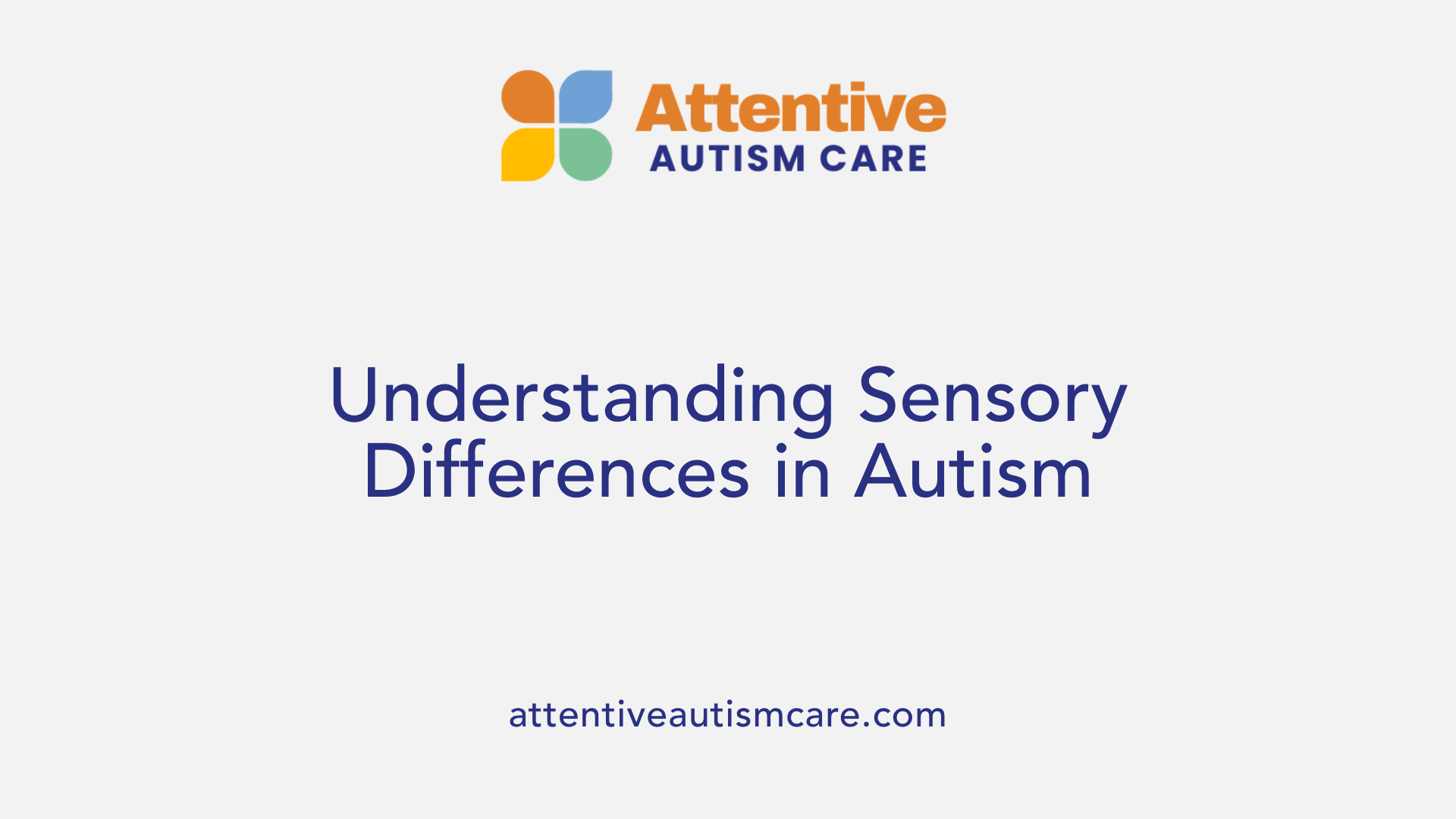
What are sensory processing differences in autism?
Sensory processing differences in autism refer to how autistic individuals uniquely perceive and respond to sensory input. This can involve either an increased sensitivity (hyper-sensitivity), a decreased sensitivity (hypo-sensitivity), or a mix of both across different senses. These differences affect how sensory information is detected, integrated, and interpreted by the brain.
Which sensory modalities are affected?
Autistic individuals may experience sensory differences across a variety of modalities including:
- Auditory (sensitivity to sounds and noises)
- Visual (sensitivity to lights and visual patterns)
- Olfactory (sensitivity to smells)
- Gustatory (sensitivity to tastes)
- Tactile (sensitivity to textures and touch)
- Vestibular (balance and spatial orientation)
- Proprioceptive (awareness of body position and movement)
- Interoceptive (awareness of internal body sensations like hunger or temperature)
How common are sensory processing differences among autistic people?
Research indicates that sensory processing differences are highly prevalent in autism, with estimates ranging between 53% and 95%. This wide range underscores the variability across individuals but confirms that sensory differences are a significant characteristic for many autistic people.
What causes these sensory differences?
Variations in brain activity and connectivity underlie sensory processing differences in autism. Differences in how neural pathways process and integrate sensory information can lead to either heightened or diminished sensory responses. This affects the perception and regulation of sensory input, causing the unique sensory profiles observed in autistic individuals.
Understanding Sensory Overload: Signs and Triggers

What Is Sensory Overload?
Sensory overload occurs when an individual, especially someone with autism, faces more sensory information than their nervous system can process. This overwhelming input can disrupt daily functioning and cause distress.
What Common Triggers Cause Hyper-Sensitivity?
Hyper-sensitivity in autistic individuals can be triggered by various sensory inputs. Common triggers include:
- Bright or flickering lights
- Loud or unexpected noises
- Strong smells such as perfumes or cleaning products
- Certain tastes or textures of foods
- Unexpected touch or crowded spaces This heightened sensitivity leads to discomfort or distress when these stimuli are encountered.
What Are the Physical and Emotional Symptoms?
Symptoms of sensory overload can appear in many ways, including:
- Physical signs like increased movement, covering ears or eyes, pacing
- Emotional reactions such as anxiety, irritability, distress, or meltdowns
- Signs of shutdowns or withdrawal
- Difficulties concentrating or communicating Autistic adults may also experience headaches, nausea, fatigue, or difficulty with intimacy when overloaded.
Which Environments Pose Risks?
Certain environments are especially challenging due to the abundance of sensory inputs. These include:
- Shopping centers with bright lights and loud sounds
- School settings with multiple competing noises and movements
- Busy workplaces or public transport Creating sensory-friendly adaptations in these spaces is essential to reduce risk of sensory overload.
Hypersensitivity and Hyposensitivity: The Spectrum of Sensory Experiences

What Are the Differences Between Hypersensitivity and Hyposensitivity?
Sensory processing differences in autism can manifest as hypersensitivity or hyposensitivity, representing opposite ends of a sensory experience spectrum. Hypersensitivity, or over-responsiveness, means an individual reacts strongly to sensory inputs such as sounds, lights, or textures. This can cause discomfort or distress. In contrast, hyposensitivity, or under-responsiveness, leads to a diminished reaction to sensory stimuli, which may result in sensory-seeking behaviors to compensate for the lack of sensory input.
What Are Sensory Avoidance and Sensory Seeking Behaviors?
Hypersensitive individuals often exhibit sensory avoidance behaviors to minimize unpleasant sensory input. For example, they may cover their ears to block out loud noises or avoid certain clothing textures that feel irritating. On the other hand, those who are hyposensitive might engage in sensory seeking behaviors, like making loud noises or touching objects and people, to stimulate their senses and regulate sensory input.
What Are Examples of Sensory Responses in Autistic Adults?
Autistic adults can experience these sensory responses in various settings. Hypersensitivity may lead them to find bright lights or strong smells overwhelming, causing anxiety or the need to withdraw. Conversely, hyposensitivity might prompt them to seek out intense sensory experiences to feel more grounded, such as using weighted blankets or engaging in repetitive tactile movements. Recognizing individual sensory profiles helps tailor strategies to support comfort and regulation in daily life.
Impact of Sensory Processing Differences on Daily Living

How Do Sensory Processing Differences Affect Sleep, Eating, and Social Interaction?
Sensory processing differences profoundly influence various daily activities for autistic individuals. Sleep can be disrupted by heightened sensitivity to environmental factors like light, sound, or temperature, making it difficult to fall or stay asleep. Eating habits are often affected, with some showing aversions to certain food textures, tastes, or smells, which can limit diet variety and lead to nutritional concerns.
Social interactions may be challenging due to sensory overload in environments like crowded spaces with loud noises and bright lights. This can cause discomfort, anxiety, or withdrawal, making communication and social engagement harder to maintain.
What Challenges Arise in Self-Care?
Sensory sensitivities also impact self-care routines. For example, hypersensitivity to touch or certain clothing textures can make dressing or personal hygiene tasks uncomfortable or distressing. Similarly, hypersensitive responses to water temperature or soap scents may complicate bathing. These challenges can require adapted routines or supports to maintain independence.
What Are the Mental Health Implications Including Anxiety and Depression?
The strain of managing sensory overload and related difficulties can contribute to significant mental health challenges such as anxiety and depression. Sensory over-responsivity is closely linked with emotional distress and can exacerbate feelings of isolation due to difficulty participating in everyday situations comfortably.
Comorbid conditions including insomnia and mood disorders are commonly observed, posing additional barriers to wellbeing. Effective support, including therapies like cognitive-behavioral therapy, sensory integration approaches, and mindfulness-based strategies, can help regulate sensory input and emotional responses, enhancing overall quality of life.
Assessment Tools for Identifying Sensory Sensitivities

Use of Sensory Diaries
Sensory diaries are practical tools that help individuals track their daily sensory experiences. By recording encounters with various sensory inputs—such as sounds, lights, and textures—people can identify specific sensitivities and triggers. These diaries also support caregivers and professionals in understanding patterns related to sensory overload or comfort.
Role of Occupational Therapists
Occupational therapists play a crucial role in assessing and managing sensory processing differences. They conduct detailed evaluations to pinpoint sensory sensitivities and develop personalized sensory diets or coping strategies. Their expertise helps in designing interventions that enhance sensory integration and improve daily functioning for autistic individuals.
Existing Assessment Methods and Their Limitations
Current sensory sensitivity assessments include questionnaires, direct observations, and physiological measures. Questionnaires provide self-reported or caregiver-reported data on sensory experiences, while observations allow professionals to see behaviors firsthand. Physiological measures, such as heart rate monitoring, offer objective insights. However, many of these methods focus predominantly on children, and their application in adults and adolescents is limited. Moreover, variations in tools and lack of a unified framework can hinder their effectiveness.
Need for Standardized Assessments for Adults
There is a significant gap in standardized sensory assessments tailored specifically for autistic adults. Given the prevalence of sensory processing differences across the lifespan, reliable and validated tools for adults are essential. Developing such assessments would improve diagnosis, support, and intervention planning, enabling better management of sensory challenges in adulthood.
Creating Sensory-Friendly Environments

Environmental modifications for sensory comfort
Creating sensory-friendly environments is essential to help autistic individuals manage sensory processing differences and reduce sensory overload. These modifications focus on minimizing sensory triggers and enhancing comfort.
Key adjustments include controlling lighting, noise, and physical space to align with individual sensory profiles. This customization helps prevent overstimulation and supports emotional regulation.
Using dim lighting and noise reduction
Bright lights and loud noises are common triggers for hypersensitivity. Implementing dim lighting with adjustable brightness levels can reduce visual discomfort. Using blackout curtains or soft lamps creates a soothing atmosphere.
Noise reduction strategies, such as soundproofing, using rugs and curtains to absorb sound, and employing noise-canceling headphones, significantly decrease auditory overload. These methods create a calmer environment conducive to focus and relaxation.
Incorporating natural decor and comforting textures
Natural elements like plants and wood furniture contribute to a calming sensory experience. Their organic textures and colors help soothe the nervous system.
Comforting textures, such as plush cushions, weighted blankets, and soft rugs, provide tactile input that many autistic individuals find grounding and pleasant. Including these textures supports sensory regulation and comfort.
Importance of reducing clutter
Cluttered spaces can contribute to sensory overload by overwhelming the visual field and causing distraction or anxiety.
Maintaining organized and minimalistic spaces helps reduce sensory input and promotes predictability. Clear storage solutions and regular decluttering strategies are effective in creating a manageable environment.
Overall, combining these environmental approaches creates supportive spaces that accommodate sensory sensitivities and enhance wellbeing for autistic adults.
Sensory Tools and Supports to Manage Sensory Overload

Noise-Canceling Headphones
Noise-canceling headphones are highly effective in reducing auditory sensory overload, a common challenge for many autistic individuals. By blocking or minimizing background noise, these headphones help create a calmer environment that lessens anxiety and improves focus, especially in busy or noisy settings like shopping centers or schools.
Weighted Blankets and Deep-Pressure Clothing
Weighted blankets and deep-pressure clothing offer gentle, consistent pressure that can help soothe the nervous system. This sensory input mimics a comforting hug, reducing stress and anxiety and supporting emotional regulation during overwhelming sensory experiences.
Fidget Toys and Stress Balls
Fidget toys and stress balls provide tactile stimulation that can help individuals manage sensory-seeking behaviors or distract from distressing sensory input. These tools can aid in maintaining attention, self-soothing, and grounding during sensory overload episodes.
Personalized Sensory Kits
Personalized sensory kits combine multiple sensory tools tailored to an individual's unique sensory profile. Kits might include noise-canceling headphones, textured objects, weighted items, and calming tactile materials. These kits empower autistic people to self-regulate by accessing their preferred supports promptly, facilitating better control during sensory challenges.
Developing Personalized Sensory Diets

What Are Scheduled Sensory Activities?
Scheduled sensory activities are planned, regular engagements designed to provide the nervous system with the sensory input it needs to function optimally. These activities aim to help individuals, particularly autistic adults, maintain sensory regulation throughout the day and reduce the likelihood of sensory overload.
What Are Some Examples of Sensory Activities?
Examples include swinging, which provides vestibular input; yoga, which incorporates proprioceptive and interoceptive cues to enhance body awareness; and interacting with textured objects, which offer tactile stimulation. These activities are chosen based on an individual's sensory preferences and needs to promote balance between sensory seeking and avoiding behaviors.
How Do Occupational Therapists Help Design Sensory Diets?
Occupational therapists play a pivotal role in creating personalized sensory diets. They assess sensory processing differences through observations and sensory diaries and then tailor activity schedules to address hypersensitivities or hyposensitivities. Their expertise ensures that activities are safe, enjoyable, and effective in supporting sensory integration.
What Are the Benefits of Sensory Diets for Nervous System Regulation?
Sensory diets help regulate the nervous system by providing consistent, controlled sensory input. This supports emotional stability, reduces anxiety, and mitigates the frequency and intensity of sensory overload episodes. Regular sensory input through these planned activities enhances daily functioning, improves sleep, supports social interactions, and fosters greater independence.
| Aspect | Description | Example/Detail |
|---|---|---|
| Scheduled Activities | Planned sensory inputs to maintain nervous system balance | Swinging, yoga, textured objects |
| Occupational Therapist Role | Assessment and design of tailored sensory diets | Personalized plans based on sensory assessments |
| Nervous System Regulation | Achieving emotional and sensory stability | Reducing anxiety, preventing overload |
| Benefits | Improved daily functioning, sleep, and social engagement | Enhances independence and well-being |
Behavioral and Physical Therapy Approaches to Sensory Regulation

What is Sensory Integration Therapy (SIT)?
Sensory Integration Therapy (SIT) is designed to improve how the brain processes sensory information. It focuses on enhancing sensory-motor processing by engaging individuals in activities tailored to their sensory needs. Therapists use SIT to help modulate neural pathways involved in sensory integration, which may also aid emotional regulation. This approach is especially used with children but can be adapted for adults. While evidence varies, SIT aims to reduce sensory sensitivities and support better day-to-day functioning.
How do Sensory Circuits Support Regulation?
Sensory circuits are structured routines or exercises that provide controlled sensory input to prepare individuals for daily activities. These circuits might include activities such as swinging, jumping, or tactile play, designed to regulate the nervous system before engaging in more demanding sensory environments like schools or social settings. They help reduce sensory overload risk by organizing sensory systems and promoting calmness and focus.
What Role Does Physical Activity (PA) Play?
Physical activity interventions provide opportunities for sensory-motor engagement and have been found beneficial for sensory modulation. Activities like yoga, swimming, or aerobic exercise support both physical health and sensory regulation by releasing endorphins and promoting relaxation. PA can be incorporated as part of a sensory diet—planned, regular sensory activities that help maintain a balanced sensory state to prevent overload.
How Are Mindfulness-Based Cognitive Therapy (MBCT) and Cognitive Behavioral Therapy (CBT) Applied?
Mindfulness-Based Cognitive Therapy (MBCT) and Cognitive Behavioral Therapy (CBT) approach sensory challenges by addressing emotional responses and coping mechanisms. MBCT helps deactivate brain regions involved in heightened emotional reactions to sensory input, such as the amygdala, fostering calmness and emotional regulation. CBT is tailored to help individuals manage intrusive sensory experiences and associated anxiety, equipping them with strategies to reinterpret and cope with sensory triggers effectively.
Together, these behavioral and physical therapy approaches provide a multi-faceted toolkit for supporting individuals with autism to better process sensory information, reduce distress, and improve quality of life.
Applied Behavior Analysis (ABA) Therapy: An Introduction
What is Applied Behavior Analysis (ABA) therapy?
Applied Behavior Analysis (ABA) therapy is a scientifically validated method designed to improve specific behaviors and skills, especially in individuals with autism spectrum disorder (ASD). Rooted in the principles of learning and behavior, ABA uses strategies such as positive reinforcement and prompting to encourage desirable behaviors while understanding the triggers and consequences that influence actions.
Scientific foundations
ABA therapy is grounded in behavioral science, focusing on how behavior is learned and maintained. It involves analyzing the context of behaviors, applying reinforcement to increase functional skills, and reducing problematic behaviors. Research supports ABA’s effectiveness in fostering developmental progress, improving communication, social skills, and self-care abilities.
Settings and delivery formats
ABA programs are highly adaptable and can be delivered in various environments, including homes, schools, and community settings. Different methodologies cater to individual needs, from highly structured Discrete Trial Training (DTT) to naturalistic approaches like Pivotal Response Treatment (PRT), and play-based models such as the Early Start Denver Model (ESDM).
Individualized goal setting
Each ABA program is personalized, focusing on tailored goals based on an individual's unique strengths and challenges. These goals may include improving communication, enhancing social interactions, mastering self-care tasks, and gaining academic skills. Qualified professionals design and supervise these plans to ensure they align with the individual's developmental needs.
Benefits of ABA Therapy for Individuals with Autism
How does ABA therapy benefit individuals with autism?
ABA (Applied Behavior Analysis) therapy is a well-established, evidence-based approach that supports autistic individuals by focusing on skill acquisition and behavior management. One of its primary benefits is helping individuals develop essential communication and social interaction skills. By using positive reinforcement and systematic teaching methods, ABA therapy helps enhance language abilities, improve attention, and nurture social understanding.
Beyond communication, ABA therapy works to reduce harmful or disruptive behaviors by identifying triggers and teaching appropriate alternatives. This individualized approach ensures that interventions meet each person's unique needs, promoting safer and more positive interactions in various settings.
Emotional regulation and social skills are additional areas where ABA therapy offers significant support. Structured behavioral techniques enable individuals to recognize and manage their emotions better, which improves relationships and overall well-being.
Moreover, ABA therapy prepares individuals for increased self-advocacy and community involvement. Learning daily living skills and coping strategies fosters independence and confidence, empowering autistic individuals to navigate their environments more effectively.
In summary, ABA therapy provides a comprehensive, scientifically validated framework that promotes developmental progress, reduces challenges, and equips autistic individuals for a higher quality of life and autonomy.
Providers of ABA Therapy for Autism
Who Typically Provides ABA Therapy?
ABA therapy is provided by trained professionals who hold specific credentials to ensure quality and effectiveness. The most common providers are Board Certified Behavior Analysts (BCBAs), who are experts in assessing behavior and designing individualized treatment plans tailored to the needs of autistic individuals.
Qualifications of Providers
BCBAs obtain certification through rigorous education and supervised experience, focusing on behavioral analysis and intervention techniques. Alongside BCBAs, behavior technicians play an essential role by delivering therapy under their supervision. These technicians receive specialized training to implement behavior plans and work directly with clients.
Organizations Offering ABA Therapy
Various organizations specialize in delivering ABA therapy. Such organizations often employ licensed clinicians and a team of behavior analysts and therapists. Examples include dedicated pediatric autism service providers like LEARN Behavioral, which focus on providing comprehensive support.
Settings for Service Provision
ABA therapy can take place in multiple environments to best fit the individual's needs:
- In-Home Therapy: Provides a comfortable, familiar setting that can enhance learning.
- Center-Based Therapy: Offers a structured environment with access to specialized resources.
- Community-Based Therapy: Supports generalization of learned skills in real-world settings.
By delivering therapy across these diverse settings, providers can tailor interventions effectively to support skill acquisition and reduce challenging behaviors through evidence-based methods like positive reinforcement.
Key Techniques in ABA Therapy
What are the main components or techniques used in ABA therapy?
Applied Behavior Analysis (ABA) therapy utilizes several core techniques to support skill development and behavior change in individuals, especially those with autism.
Discrete Trial Training (DTT) is one key method, involving structured, one-on-one teaching sessions. In DTT, tasks are broken down into small, manageable units, and positive reinforcement is provided immediately following correct responses to encourage learning.
Pivotal Response Treatment (PRT) offers a more naturalistic approach. It leverages a child’s interests and play activities to engage and motivate, targeting pivotal areas such as motivation and self-management, which can generalize improvements across multiple skills.
Another essential component is the analysis of Antecedents, Behaviors, and Consequences (A-B-Cs). This method helps identify what triggers certain behaviors and the results that maintain them, which guides the development of effective interventions.
ABA also employs task analysis, breaking down complex skills into sequential steps to facilitate learning and mastery. Alongside this, functional behavior assessments are performed to uncover the reasons behind challenging behaviors.
Throughout therapy, consistent data-driven progress monitoring ensures that interventions are adjusted based on individual performance and outcomes. This personalized approach is central to ABA’s effectiveness in promoting meaningful change.
Together, these techniques constitute a comprehensive framework that is adapted to meet each individual's unique needs and goals, supporting their development in a structured yet flexible manner.
Managing Meltdowns: Understanding and Support Techniques
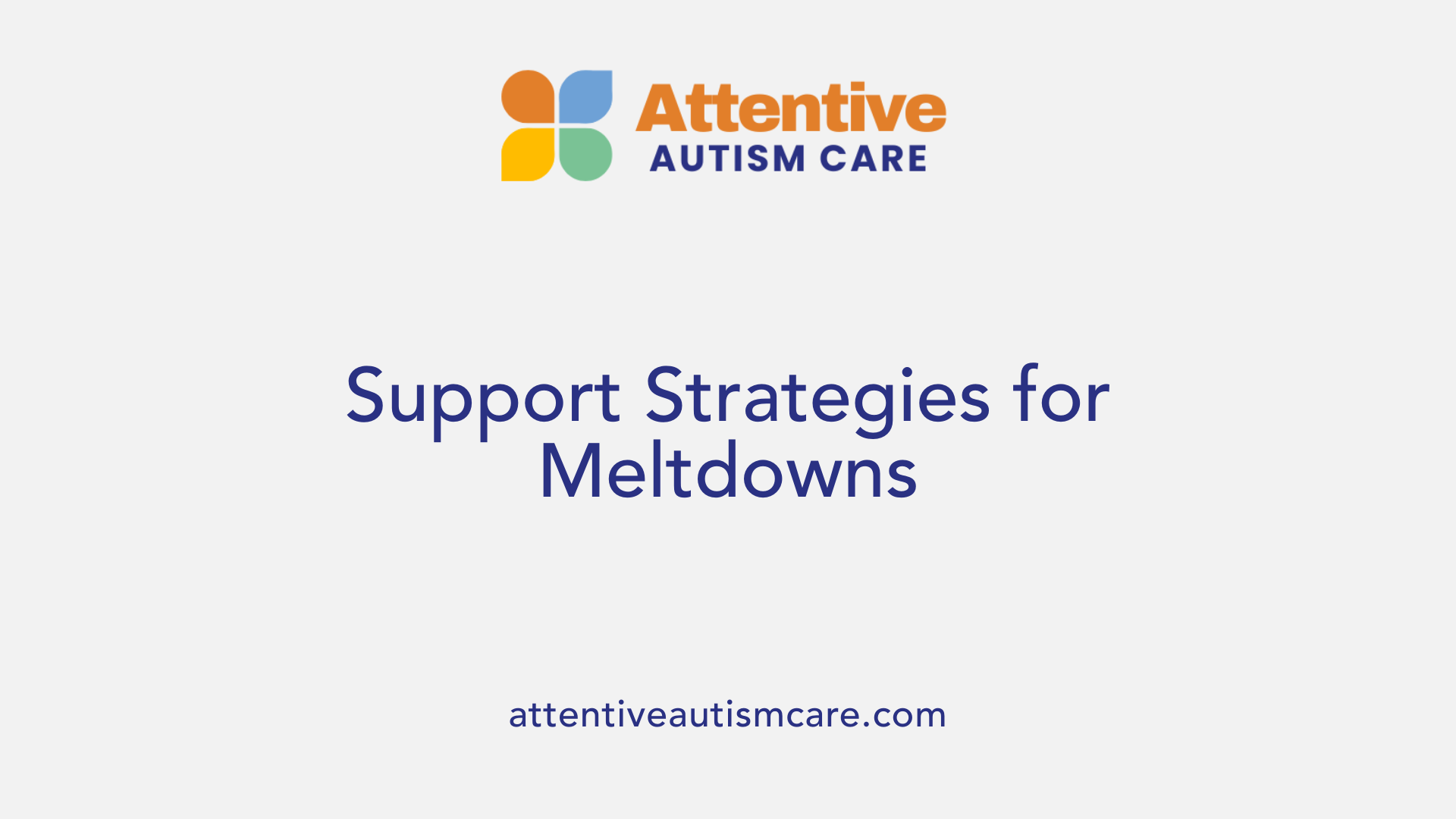
What are meltdowns in the context of sensory processing?
Meltdowns in autistic individuals are involuntary responses to nervous system overload often caused by sensory processing difficulties. When sensory input becomes overwhelming, the nervous system struggles to cope, triggering intense emotional and physical reactions.
What are common physical manifestations of meltdowns?
Meltdowns can include visible physical behaviors such as stomping feet, screaming, crying, or other heightened expressions of distress. These are not intentional tantrums but rather the body's way of signaling overload and distress.
How can the three-step approach of regulate, relate, and reason support during meltdowns?
- Regulate: This first step involves using body-based coping mechanisms like stimming, which may help soothe sensory distress. Caregivers are encouraged to remain calm and engage with the individual at their current energy level to support regulation.
- Relate: Empathy and reassurance are crucial here. Caregivers should validate the individual's feelings and help create a safe, comforting environment. Tools such as weighted blankets can provide additional support.
- Reason: Once calm, discussing what triggered the meltdown helps the individual understand and manage future responses, fostering emotional regulation.
What is the role of body-based coping and caregiver support?
Body-based coping like stimming allows the individual to self-regulate sensory input. Caregiver support through calm presence, empathy, and validation is essential in reducing distress and providing a supportive space. Together, these approaches facilitate effective management of sensory-driven meltdowns.
Emotional Regulation and Sensory Over-Responsivity (SOR)
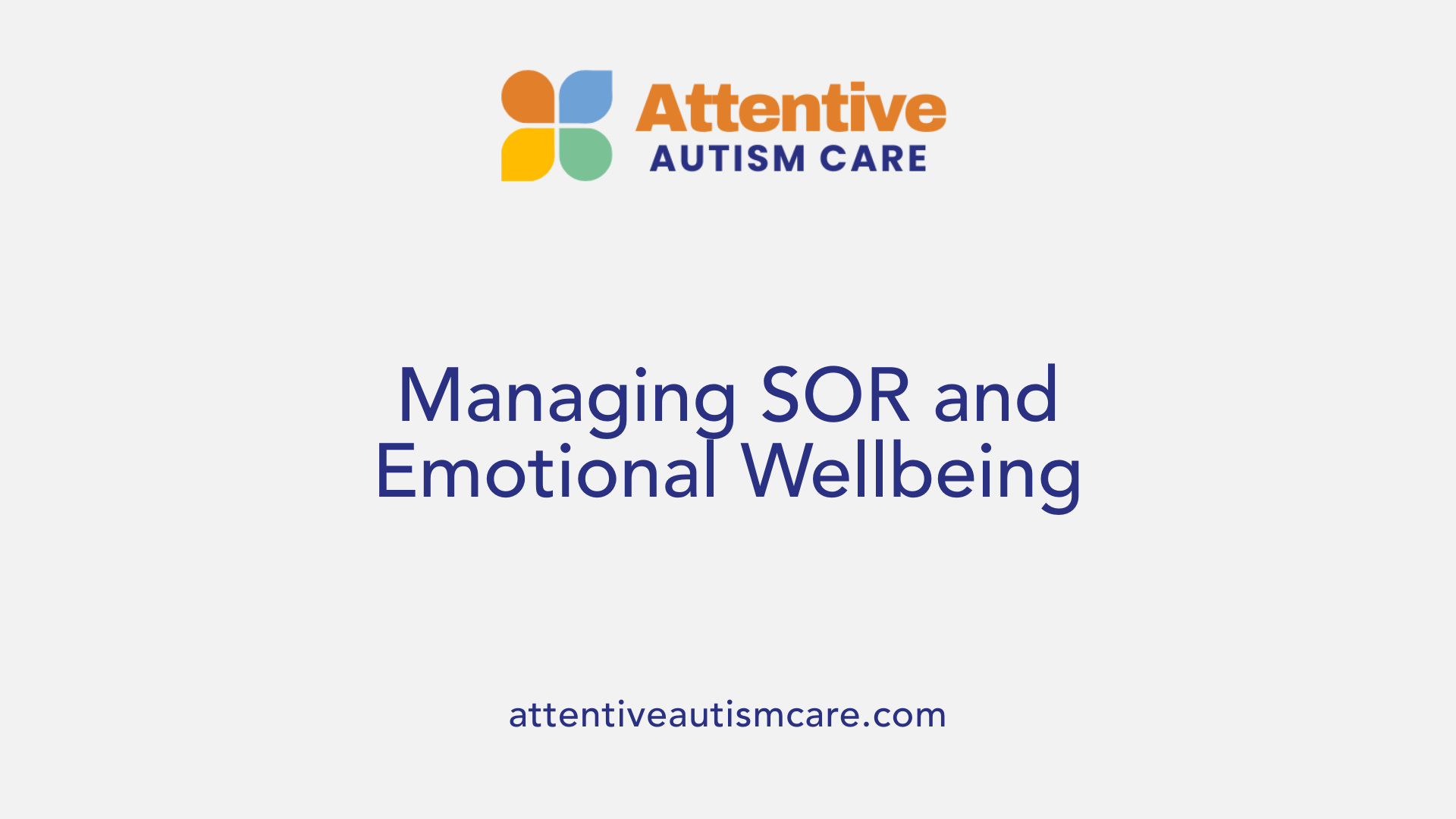
How is sensory over-responsivity (SOR) related to anxiety and depression?
Sensory over-responsivity (SOR) in autistic individuals often presents as an exaggerated reaction to sensory stimuli, causing significant emotional challenges. This heightened sensitivity is closely linked with anxiety and depression, as the constant bombardment of overwhelming sensory inputs can increase stress and emotional distress. Individuals with SOR may feel persistently on edge or unable to escape from uncomfortable sensations, which can intensify feelings of anxiety and lead to depressive symptoms.
What impact does SOR have on family life?
SOR can profoundly affect family dynamics. Family members often face increased stress as they try to support the autistic individual through sensory challenges and resulting emotional reactions. Meltdowns, avoidance behaviors, or anxiety triggered by sensory inputs may disrupt routines and require ongoing adjustments in the home environment. This can result in fatigue and emotional strain for caregivers, underscoring the need for targeted interventions to assist both individuals with SOR and their families.
What therapeutic approaches are used to help manage SOR?
Several therapies focus on improving emotional regulation in the context of sensory sensitivities. Cognitive-behavioral therapy (CBT) tailored to sensory experiences helps individuals develop coping strategies to manage anxiety triggered by sensory stimuli. Mindfulness-based cognitive therapy (MBCT) aims to reduce emotional reactivity by promoting awareness and acceptance of sensory input, potentially deactivating brain regions involved in stress responses like the amygdala. Sensory integration therapy (SIT) targets neural pathways to enhance sensory-motor processing, enabling better regulation of sensory information and emotional responses.
What do we know about the neural mechanisms underlying SOR?
The underlying neural causes of SOR involve disruptions in brain connectivity and neurochemical imbalances. Impairments in excitatory/inhibitory signaling may heighten sensory sensitivity, while atypical development of neural pathways involved in sensory integration affects how sensory information is processed and regulated emotionally. Therapeutic approaches such as SIT and mindfulness aim to modify these neural circuits, reducing over-responsivity and improving emotional regulation.
This neuroscience-informed understanding guides multi-faceted behavioral therapies designed to support autistic individuals in managing SOR and related emotional difficulties effectively.
Promoting Self-Advocacy and Community Support

Learning to Identify Sensory Needs
Understanding and identifying individual sensory preferences and triggers is foundational to effective self-advocacy. Autistic individuals can benefit from keeping sensory diaries or using assessments guided by occupational therapists to clarify their unique sensory profiles. This self-awareness enables them to recognize when sensory overload might occur and what accommodations or coping strategies they require.
Working with Support Systems for Accommodations
Once sensory needs are identified, collaborating with support systems — such as family members, educators, employers, and healthcare professionals — becomes essential. This cooperation helps tailor accommodations like quiet workspaces, customized lighting, or sensory tools such as noise-canceling headphones and weighted blankets. Advocacy for these supports ensures environments become more manageable and reduce sensory distress.
Role of Autism Community Connections
Connecting with the broader autism community offers emotional reinforcement and practical guidance. These communities provide safe spaces where individuals can share experiences, exchange coping methods, and foster a sense of belonging. Engaging with peers who understand sensory processing differences enhances resilience and reduces feelings of isolation.
Benefits of Peer Support and Shared Strategies
Peer support facilitates shared learning and encouragement, which can empower autistic individuals to develop novel sensory management techniques and bolster confidence in self-advocacy. Sharing lived experiences promotes problem-solving and innovation in handling sensory challenges, making it easier to navigate daily life and social interactions.
Integrating Multidisciplinary Supports for Sensory Management

How Does Occupational Therapy Assist in Sensory Management?
Occupational therapists play a pivotal role in addressing sensory processing differences in autistic individuals. They develop personalized coping strategies and design tailored sensory diets that include scheduled sensory activities like swinging or using textured objects to help regulate the nervous system. By focusing on sensory-motor processing, occupational therapy aims to optimize how sensory information is integrated, ultimately reducing sensory overload and improving daily functioning.
What Role Does Speech-Language Pathology Play?
Speech-language pathologists support sensory management by addressing communication difficulties that often accompany sensory sensitivities. They work on enhancing communication skills, which can reduce frustration and prevent escalation during sensory overload. Additionally, they assist individuals in developing self-advocacy skills, empowering them to express their sensory needs and collaborate effectively with educators, employers, and caregivers.
How Can Mental Health Counseling Contribute?
Mental health professionals provide therapies such as cognitive-behavioral therapy (CBT) and mindfulness-based cognitive therapy (MBCT) to help autistic individuals manage emotional responses related to sensory overload. These approaches aim to develop coping mechanisms that regulate anxiety, stress, and depression often linked with sensory over-responsivity. By integrating these therapies, individuals can learn to better handle the emotional challenges that arise from sensory sensitivities.
What is the Role of Disability and Accessibility Offices?
Disability and accessibility services facilitate accommodations that create supportive sensory environments, especially in work and educational settings. They help implement practical modifications like quiet workspaces, adjusted lighting, and reduced noise levels. These accommodations minimize sensory triggers and support individuals in maintaining focus and comfort throughout their daily activities.
Together, these multidisciplinary supports form a comprehensive network that addresses the complexity of sensory processing differences. Their combined efforts enable autistic adults to manage sensory challenges more effectively and enhance their overall quality of life.
Strategies for Routine, Predictability, and Physical Health
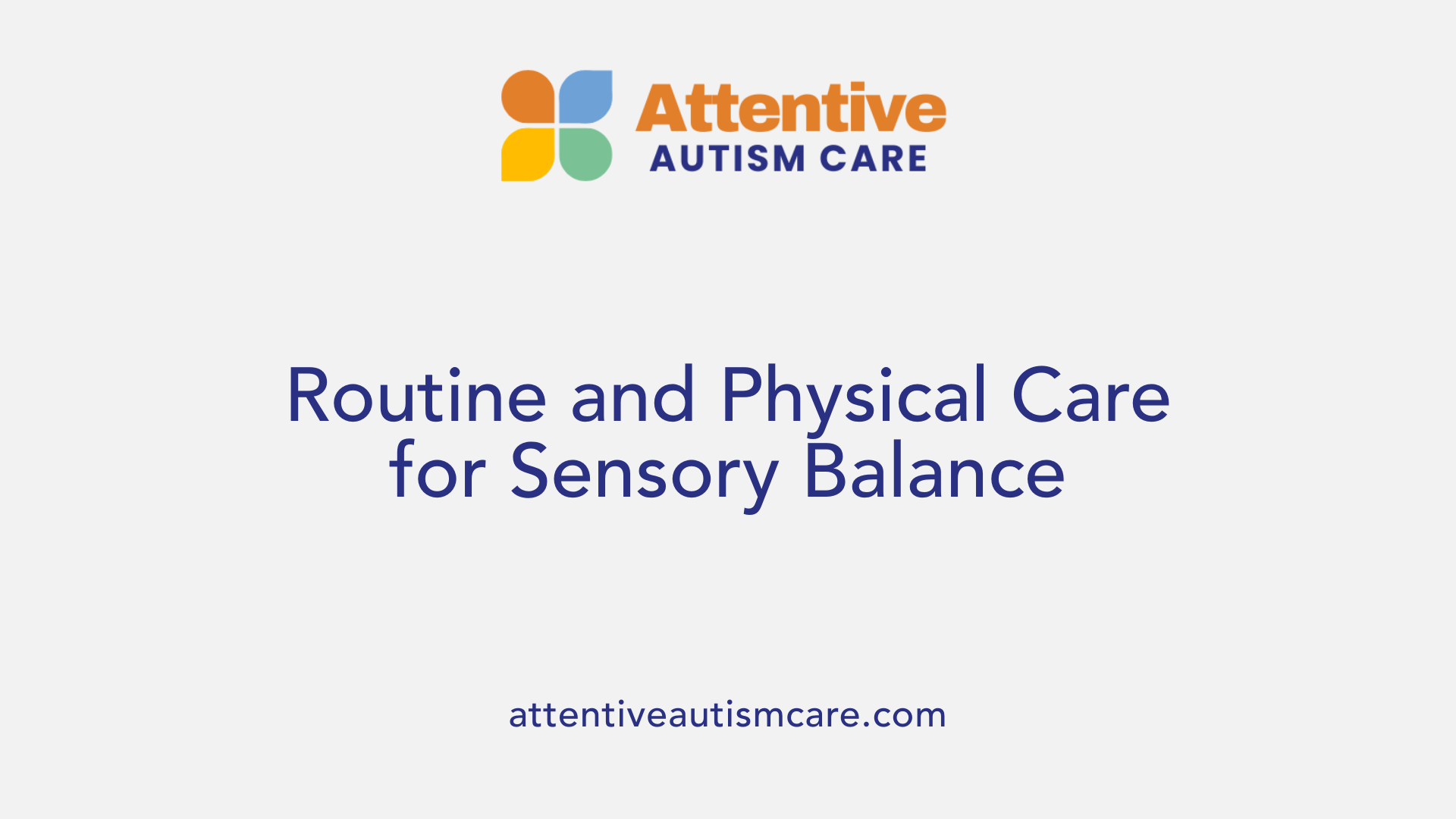
Why Are Routine and Predictability Important for Reducing Anxiety?
For autistic individuals, having structured daily routines and predictability can significantly reduce anxiety. Unpredictability or sudden changes may cause sensory overload or emotional distress, so consistent schedules help create a sense of safety and control. Predictable environments ease sensory sensitivities by minimizing unexpected sensory inputs.
How Do Hydration, Comfortable Clothing, and Physical Health Support Sensory Regulation?
Maintaining good physical health is foundational for managing sensory challenges effectively. Staying well-hydrated supports overall bodily function and can influence sensory processing. Wearing comfortable, non-irritating clothing helps prevent distractions or discomfort linked to tactile sensitivities. Physical wellbeing also includes getting enough rest, engaging in soothing physical activities, and avoiding sensory triggers related to health issues like poor digestion or sleep disturbances.
How Can Sensory-Friendly Self-Care Routines Be Incorporated?
Creating personalized self-care routines that consider sensory preferences supports sensory regulation. Examples include gentle stretching or yoga, soothing baths, mindfulness practices, or rhythmic movements. Using sensory-friendly tools during self-care, such as weighted blankets or calming tactile objects, can enhance relaxation. Establishing regular times for these activities contributes to nervous system balance, preventing overload and promoting emotional wellbeing.
Building Comprehensive Sensory Safety Plans
Understanding individual sensory profiles
Each autistic person experiences sensory input uniquely, making it essential to understand individual sensory profiles. These profiles include personal preferences, sensitivities, and reactions to different stimuli such as sound, light, texture, and internal sensations. By identifying what triggers discomfort and what provides comfort, individuals can be empowered to communicate their specific needs effectively.
Identifying triggers and soothing strategies
Once sensory sensitivities are recognized, the next step is pinpointing specific triggers—like bright lights, loud noises, or certain textures—that cause sensory overload or distress. Equally important is identifying effective soothing strategies such as using noise-canceling headphones, weighted blankets, or engaging in calming activities like deep breathing and rhythmic movements. These strategies help regulate the nervous system during challenging sensory experiences.
Planning sensory downtime and rest
Sensory downtime is vital for restoring balance in an overwhelmed nervous system. Scheduling regular breaks and quiet moments allows for recovery and reduces the risk of burnout or meltdowns. Establishing routines that incorporate sensory rest or gentle activities like yoga or mindfulness can enhance overall well-being.
Utilizing sensory workbooks and mindfulness apps
Resources such as sensory workbooks help individuals track their sensory experiences, recognize patterns, and develop personalized coping techniques. Mindfulness apps offer guided exercises to manage emotional responses to sensory input, promoting relaxation and improved self-regulation.
By creating tailored sensory safety plans that consider these elements, autistic adults can better navigate sensory challenges and improve their quality of life.
Towards Empowered Sensory Management in Autism
Managing sensory overload is essential to enhancing quality of life for autistic adults. Through understanding sensory processing differences, identifying triggers, and utilizing evidence-based therapeutic interventions like ABA therapy alongside sensory integration techniques, individuals gain critical tools for regulation and emotional wellbeing. Multidisciplinary supports, personalized sensory diets, and community connection further empower autistic adults to negotiate sensory challenges successfully. Moving forward, continued research and tailored approaches will refine these strategies, fostering greater autonomy, comfort, and participation in society.
References
- Autism and sensory processing
- Interventions for Sensory Over-Responsivity in Individuals with ...
- Meltdowns & Calming Techniques in Autism
- Sensory issues
- How to Deal with Sensory Overload in Autistic Adults
- Managing Sensory Issues as an Adult with ADHD or Autism
- Applied Behavior Analysis (ABA)
- Applied Behavior Analysis (ABA)





